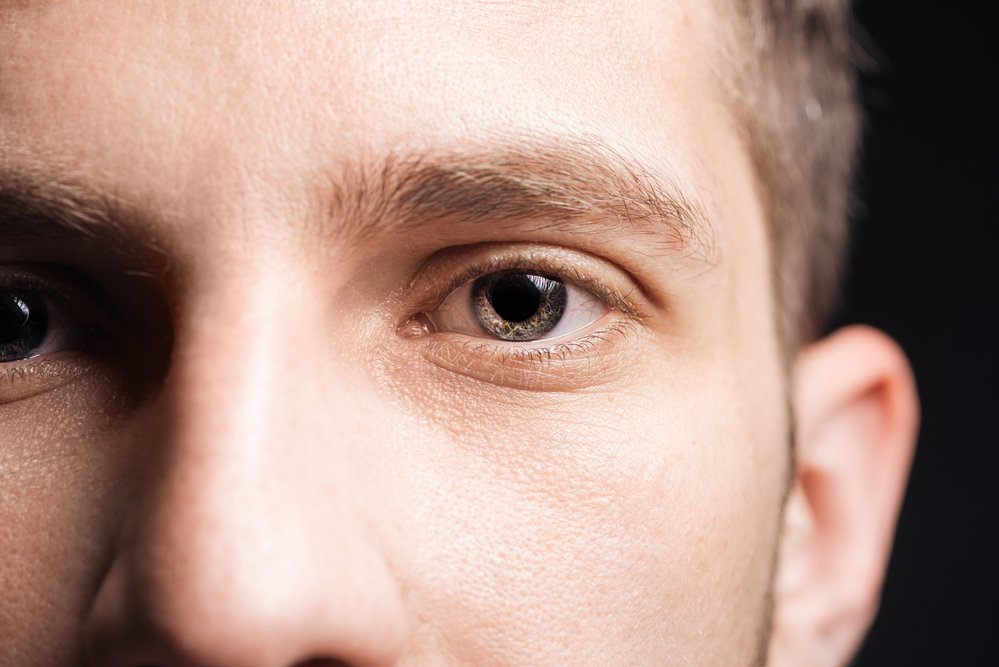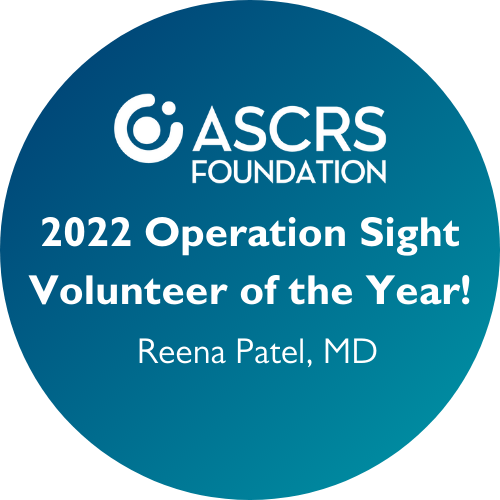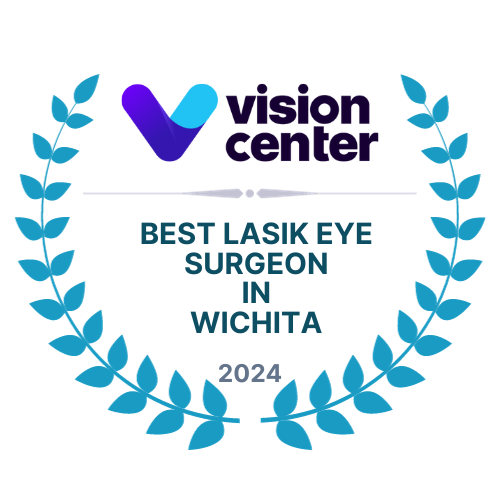Cataracts are a common eye condition that can cause cloudy vision, blurred vision, and many other vision issues. Unfortunately, cataracts do not get better without treatment, such as cataract surgery. Modern cataract surgery with LenSx® at Wichita Vision Institute in Wichita, KS may be the key to restoring your vision.
Who Is a Good Candidate for LenSx®?
The best candidates for LenSx® are people who have been diagnosed with cataracts and who are experiencing vision problems that disrupt daily life. People with mild to severe cataracts may qualify for this procedure depending on other qualifications, such as general health and eye health. You may be a good candidate for this surgery if you have symptoms of cataracts, such as:
-
Halos around lights
-
Double vision
-
Dull or washed-out colors
-
Low light difficulty
-
Poor night vision
-
Reduced depth perception
-
Blurry or cloudy vision
-
Frequent corrective lens prescriptions
Some people may not qualify for this procedure, such as people who have small pupils or small eyes. Those who are diagnosed with glaucoma and corneal disease may also not qualify for this procedure. A complete eye exam will need to be completed during your consultation to assess whether your eyes are healthy enough for this procedure. If not, traditional cataract surgery may be a better fit.
Will Your Vision Need to Be Tested Before This Procedure?
Part of your consultation will include a thorough eye exam to assess the health of your eyes, gather information about any eye diseases or disorders you may have, and measure the acuity of your vision. Tests for your eyes will include measuring the thickness of your cornea, testing your current lens prescription, measuring your eye pressure, and conducting a pupil dilation test.
Furthermore, vision acuity tests can also be used to identify which intraocular lenses are most appropriate for your vision needs. Specific lenses will be recommended based on the level of vision correction you need, if any.
What Is LenSx® and How Does This Procedure Work?
LenSx® is a laser-assisted cataract surgery that can remove cataracts without using a blade. Unlike traditional cataract surgery, this procedure is minimally invasive and controlled by a computer, which means the procedure is incredibly precise and effective. This procedure can easily restore your vision, even if your cataracts are severe.
The laser used for this procedure essentially breaks up cataracts on the lens of the eye and extracts dissolved cataracts. Once the eye is clear, an intraocular lens is installed, which replaces the natural lens of the eye that has been removed by the laser. Sometimes, the intraocular lens is corrective to address other vision issues, such as nearsightedness or farsightedness. The lens will protect your eye and help with visual acuity.
What Kind of Corrective Lens Can Be Installed?
An intraocular corrective lens is basically a permanent contact lens so you will not need to use glasses in the future. If you had vision problems before developing cataracts, an intraocular corrective lens can correct your vision in the long term. There are a few different types of lenses that can be installed, such as bifocal lenses, trifocal lenses, or other multifocal lenses.
How Should You Prepare For This Procedure?
To prepare for laser eye surgery, you will need to stop wearing contact lenses at least one week before your procedure. It’s better to wear glasses since contact lenses can interfere with some pre-surgery eye measurements and may also increase the risk of eye infections that can delay your procedure. Patients should also stop wearing eye makeup and other skincare products around the eye to reduce the risk of infection.
Other preparation for your surgery can include arranging for at-home care for the first day after your procedure. In addition to transportation, at-home care can make your immediate recovery less stressful. It’s also a good idea to fill your prescriptions, go food shopping, and prepare several easy meals before your procedure.
Will You Need Sedation for This Procedure?
For this procedure, patients do not need to use general anesthesia. Instead, IV sedation is administered to keep patients calm and comfortable throughout the procedure. Anesthetic eye drops are also used for this surgery. Because sedation and anesthetic eye drops are necessary to complete this procedure, patients will need to arrange for transportation after the surgery.
How Long Does It Take to Complete This Surgery?
This procedure can usually be completed in a half-hour, with a follow-up appointment immediately after the procedure that will also last for 30 minutes. From the first step of the surgery to the end of the follow-up appointment, your appointment can be finished in an hour. After your appointment, you should be escorted home so you can start your recovery process.
What Is Your Recovery Like?
For most patients, the bulk of the healing process will take place during the first five to seven days after the procedure. After a week, most patients can go back to work, resume light exercise, and return to other daily activities with very few restrictions. The total recovery time after this treatment is usually a few weeks, during which patients will need to follow all aftercare instructions closely.
Patients will need to use prescription eye drops, wear sunglasses outside, and wear special eye shields during sleep to protect the eyes. Patients must avoid rubbing or touching the eyes, and must also avoid getting anything into the eyes, including dirt, pollen, and eye makeup. Patients may have additional instructions to follow after the procedure, such as other prescriptions to take.
Can You Read After Your Procedure?
It’s recommended to avoid using your eyes too much during the first 12 to 24 hours after your procedure. This means you will not be able to read books, watch TV, or use any smart devices immediately after your procedure. Giving your eyes plenty of time to rest will be beneficial for your overall recovery. Sleeping, listening to podcasts, or listening to music are better options after your procedure.
Will You Have Follow-Up Appointments?
Most of the time, patients will need several follow-up appointments to assess how well the eyes are healing after the procedure. Aside from the immediate follow-up appointment post-surgery, patients will need to attend a follow-up appointment at least one month after the procedure. Additional follow-up appointments may be ordered if Dr. Patel decides further assessment is necessary.
How Long Can You Expect Results to Last?
The results of this procedure should last for a lifetime because cataracts that are removed should not return. This is because cataracts are unlikely to form on the intraocular lens that has been installed in each eye. With the natural lens of the eye removed, patients should not experience any additional vision problems. Furthermore, intraocular lenses should not need to be replaced in the future.
Is This Procedure Better Than Traditional Cataract Surgery?
For most patients, LenSx® is a much better treatment option than traditional cataract surgery. The main advantage of this procedure compared to traditional surgery is the fact that the treatment process is more precise and less risky. Because the technology used for this procedure can provide real-time images of the eye, Dr. Patel can control the laser more accurately to remove all cataracts from the eye.
Should You Consider LASIK Instead?
LASIK eye surgery is one of the most well-known corrective eye procedures in the world. However, while LASIK is ideal for correcting vision issues related to astigmatism, it is not an appropriate option for people who have cataracts. LenSx®, on the other hand, can be used to correct common vision problems and remove cataracts with equal success.
In other words, while you may not be able to use LASIK to correct cataracts, you can use this laser-assisted cataract procedure to correct the same vision problems that can be addressed by LASIK surgery. For some patients, this cataract procedure may be a better option for patients who have mild vision concerns and patients who want to install intraocular lenses.
Get Rid of Cataracts and Correct Your Vision
Having cataracts can be frustrating, especially when you are struggling with issues such as blurriness or double vision. On top of vision problems such as astigmatism, cataracts can create additional difficulties every day. However, a corrective procedure such as LenSx® can remove cataracts and correct your vision at one time. Get in touch with Wichita Vision Institute in Wichita, KS to schedule a consultation with Dr. Patel today.







